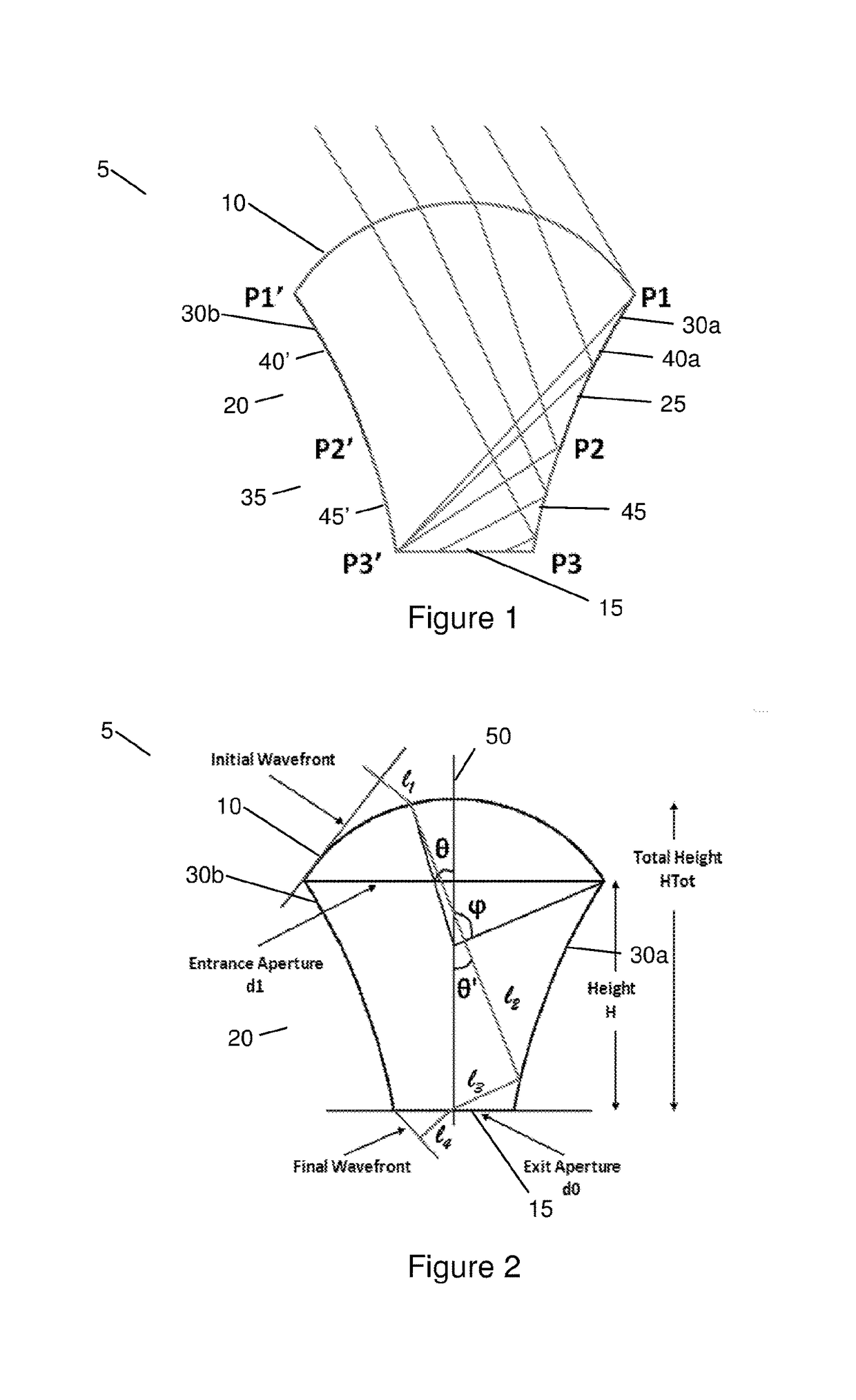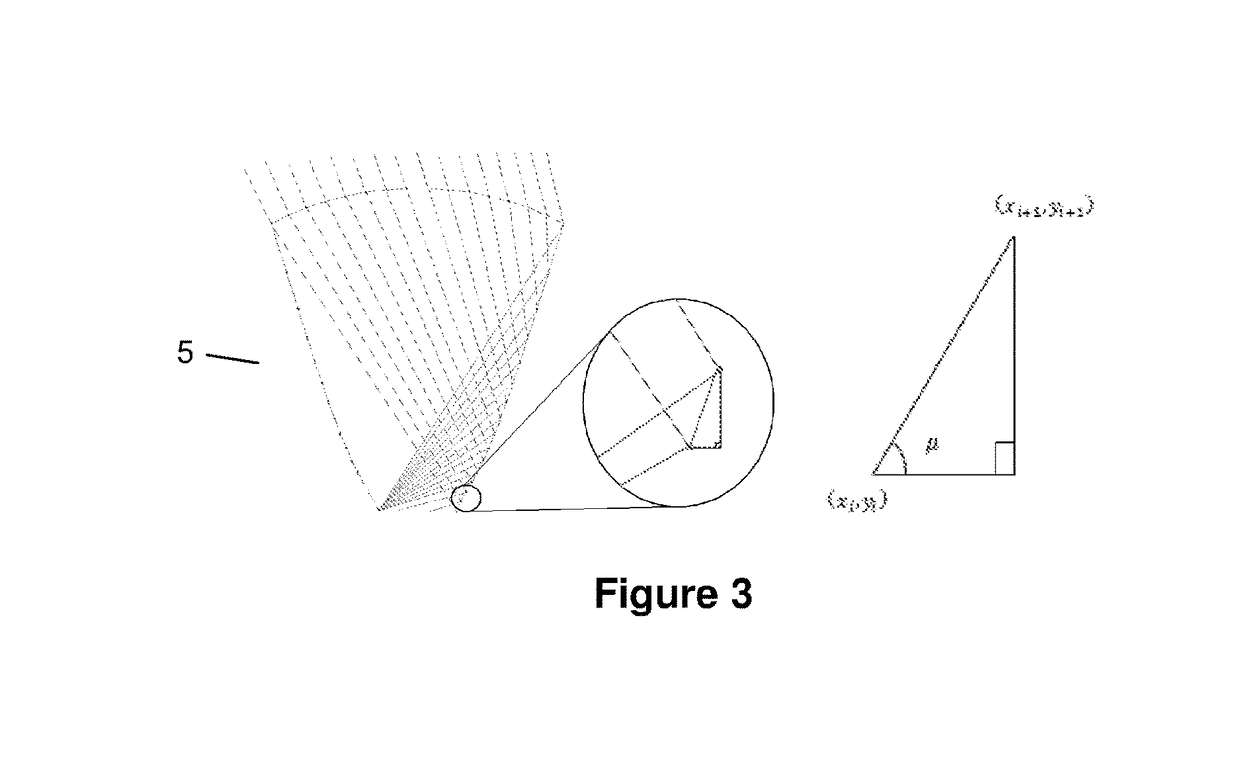Optical element
a technology of optical elements and photovoltaic materials, applied in the direction of solar heat devices, solar radiation concentration, sustainable buildings, etc., can solve the problems of low efficiency of photovoltaic materials, less than 20% of the cost of photovoltaic materials generally contributing to the overall cost of the system. , to achieve the effect of improving detection sensitivity
- Summary
- Abstract
- Description
- Claims
- Application Information
AI Technical Summary
Benefits of technology
Problems solved by technology
Method used
Image
Examples
examples
[0195]In a specific example, the trial front surface 10 arc angle φ is selected to be 30°, the dimension of the PV cell is chosen to be 1 cm×1 cm, the trial length of the entrance apertured1 is chosen to be 3 cm and the number of extreme rays N is selected to be 200. It will be appreciated that these represent arbitrary starting points for the iterative process and may be varied.
[0196]FIGS. 8(a) to (d), FIGS. 9(a) to (d) and FIGS. 10(a) to (d) show examples of optical elements 5 generated by the above process. The optical element 5 in each case is symmetrical in the x and z-axes. Each optical element 5 is presented from different angles; from a perspective view in FIGS. 8(a), 9(a) and 10(a); from the top, looking down through the front surface 10 in FIGS. 8(b), 9(b) and 10(b) and two different sides in FIGS. 8(c), 8(d), 9(c), 9(d), 10(c) and 10(d).
[0197]The optical element 5 shown in FIGS. 8(a) to (d) was generated by selecting the total height HTot to be 6.5 cm, the acceptance angl...
PUM
 Login to View More
Login to View More Abstract
Description
Claims
Application Information
 Login to View More
Login to View More - R&D
- Intellectual Property
- Life Sciences
- Materials
- Tech Scout
- Unparalleled Data Quality
- Higher Quality Content
- 60% Fewer Hallucinations
Browse by: Latest US Patents, China's latest patents, Technical Efficacy Thesaurus, Application Domain, Technology Topic, Popular Technical Reports.
© 2025 PatSnap. All rights reserved.Legal|Privacy policy|Modern Slavery Act Transparency Statement|Sitemap|About US| Contact US: help@patsnap.com



